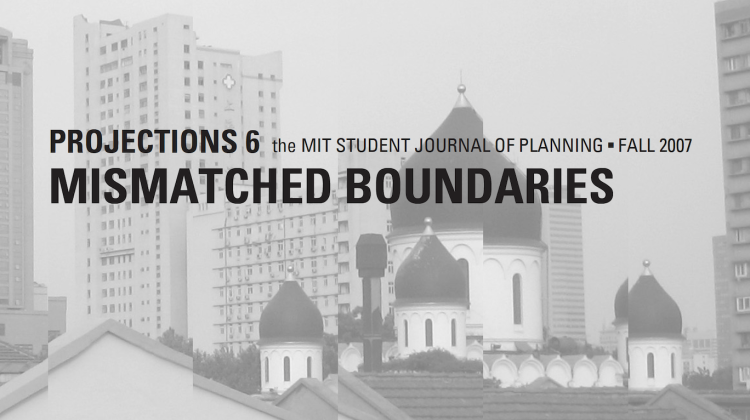Projections 6: Mismatched Boundaries

Projections, the Journal of the MIT Department of Urban Studies and Planning, focuses on the most innovative and cutting edge research in planning. Each volume is devoted to a different topic of interest to planning scholars, students, and professionals. As a peer-reviewed publication, Projections welcomes original high quality submissions at the vanguard of planning theory and practice.
The question of how to define the boundaries of a city seems to be both essential and so far unresolved. Statistical reports on urban population, econometrics analysis on the performance of urban nodes, urban and even national institutions hardly map the same cities within the same boundaries. As a consequence, it is increasingly difficult to understand how all these variables are actually interconnected in the urban realm, even less to generate meaningful comparative studies among different cities. But if the blurriness of urban boundaries in the collection of data challenges the validity of inter- and even intra-urban comparisons, it is even more difficult to compare the content and strategies of different social movements that rely on a fuzzily defined polity and a contested geography. Of course, this contestation of urban boundaries is no surprise in a world where urbanization is covering ever more territory, and urban nodes are immersed in a multidimensional global network. Likewise, as more and more people migrate to cities and urban life spreads beyond traditional urban boundaries, urbanization encompasses a wider diversity of social and geographical conditions. The paradox is that, precisely at the moment when urbanization has become one of the most meaningful entry points to understand the transformations that are affecting contemporary societies in both developed and underdeveloped nations — and that can illuminate the connections between local and global forces of change — cities are becoming increasingly harder to map.


